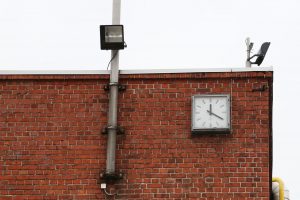
A happy employee is a productive employee – until they are not
Vol. 25, Issue 15, 03 February 2023
Employers have long managed their employees by overseeing what they are doing through close supervision. In offices and factories there have been supervisors whose only task was to keep an eye on the “shop floor” workers to ensure that productivity was at a maximum. This close scrutiny meant that the main motivational factor for employees to work hard was that it would be immediately seen if they weren’t and they would lose their job. Employees rarely thought for themselves, and simply did what they were told and nothing more.
Monitoring of timekeeping became the accepted norm in the workplace, and supervisors were slowly replaced with surveillance cameras. However, the message was still clear, do what you are paid for and nothing else, or lose your job.

The modern approach to human resources has been one of much more freedom in the workplace, and less monitoring. Letting employees get on with their tasks and duties through self-motivation and work fulfilment, is something that all employers should embrace. Most motivation comes from within, but must be nurtured also by the employer, and the work environment needs to support this to make employees feel that they are a necessary part of the company and not just a resource that needs to be used. This has been the ethos that most employers have aspired to over the last few decades and has worked well.
Then in 2020, things changed dramatically when the Corona pandemic struck. Many employers suddenly had to change to a remote work policy. Luckily for many, the advances in Technology along with the development of a good communication infrastructure in today’s world, meant that this became a quite feasible policy – as we have witnessed. However, employers quickly started wondering how they could ensure that they would get a full day’s work out of their employees if they were working from home “unsupervised”. Having to be physically at the workplace, meeting with colleagues, seeing the boss, etc., was a form of supervision but how could this be maintained through remote work?

Many companies tackled this problem through the use of remote monitoring technology, using software installed on the employee’s laptop to ensure that work was indeed being carried out during the day, smartphone technology utilising GPS to monitor where the employee was throughout the working day, and other forms of surveillance akin to spyware.
Now fast forward to the present day, most companies have recalled employees back to the workplace, either full-time or with a part-time remote work policy. However, the monitoring that employer started using, without employees pashing back, became more standardised and the result now is that employee surveillance is one again the norm. Even with established systems recording an employee’s weekly, monthly or annual working hours, employers are also going further and demanding that employees also keep more accurate records of what they do and when they do it – even if it is in the workplace, and more so if it is remote work.

This has also had a huge impact on employment contracts and working conditions. What is meant by a full working day when you are working from home? How about the location you work from, and what does “home” mean? For many Finns, working from “home” has meant their summer cottage, and call me cynical, but do you put in a full working day for your employer at your holiday home? Studies (and experience) have already shown that working from home means that household chores can also be done at the same time, therefore is the employee actually giving their employer the full 8-hour day? We can also turn this around for the employee, many seem to be more productive working at home, and take shorter lunch breaks, even lunch and coffee “breaks” whilst still sitting at their computer working. Also, there is less office chat going on, and employees are not popping into see a colleague down the corridor, so the idea of constant monitoring of employees is a two-edge sword, it can both benefit the employer and at the same time harm productivity if the employee sees it as a tool to keep them under control.
In many ways, employees are rebelling at this new wave of monitoring and surveillance, they feel as if they are not trusted to carry out the tasks that they have been assigned. Enthusiasm and motivation for work is low, creativity is lost, and productivity goes down. Employees are having to more and more account for their time and resources, often at the expense of getting the actual work done. We need to go back to empowering employees, giving the responsibility and autonomy back to them – after all, a happy employee is a productive employee, aren’t they?
- IBSEN meeting November 2025 – Split, Croatia - 12th December 2025
- Wondering where to get lunch in Kouvola town? - 5th December 2025
- IBSEN Realgame – an international ERP/SCM experience for students - 28th November 2025
